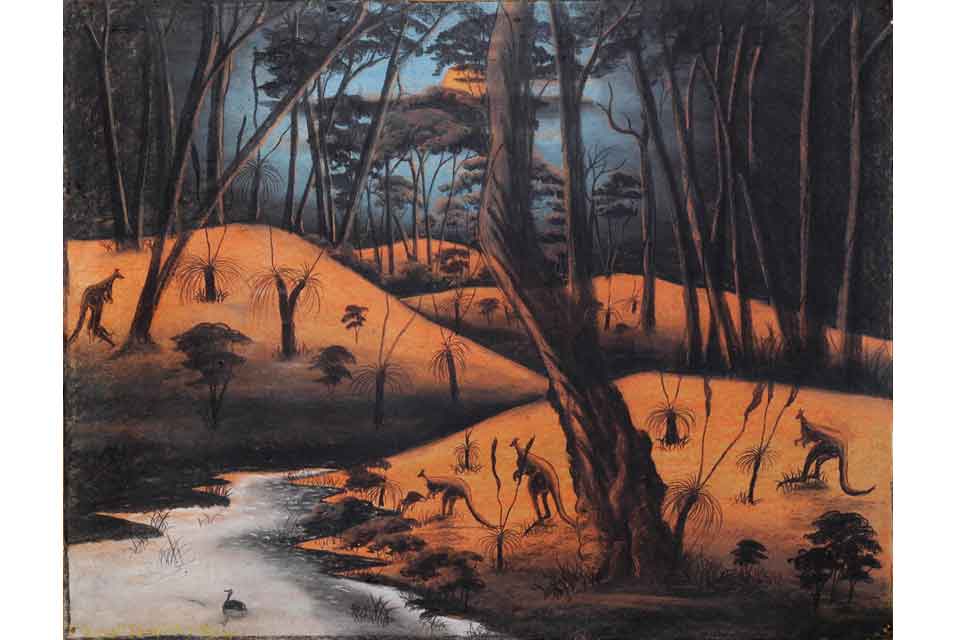
Parnell Dempster – Down to Drink, ca 1949 – Pastel – 58 x 76 cm © The Artist – Image courtesy Colgate University
A collection of drawings and paintings by Aboriginal children living in a settlement camp in the 1940s and 1950s were returned mid-May to Australia.
The trove of more than 100 pieces from the Mayer collection is to be formally transferred from Colgate University, in Hamilton, New York, to Curtin University in Perth.
This return is emotionally and historically important for Australia. From the 1910s to the early 1970s, as many as 100,000 mostly mixed-race Aboriginal children were taken from their families under government programs meant to assimilate them. Most children were housed in internment camps.
The children who were confined at the Carrolup River Native Settlement (a government institution in Western Australia) during the beginning of the 20 century, produced art so sophisticated that it received considerable acclaim when it toured Europe in the 1950s.
The Mayer collection encompasses 119 pieces, mostly pastels and landscapes, often in vivid shades of orange, yellow and blue. The images of native people, kangaroos and designs from Aboriginal culture reflect the rich heritage of the Noongar or Nyungar, people from southwestern Australia. Incorporating native and European elements, the art is not just a reminder of a painful past, but also an influence on modern Aboriginal artists, with its use of color and light.
SOURCES:
– Lee, Felicia R., “Aboriginal Artworks to Return to Australia”, The New York Time, 7 May 2013
– Cowling, Carole, “‘Stolen Generation’ artwork to transfer to Western Australia”, Curtin University’s website – News Section, 9 May 2013